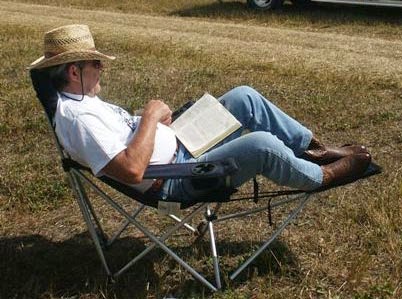Meditations on the Cross, 12
Though all four Gospels tell
us much about the 12 men whom Jesus called as disciples and later named as
apostles, we also find a much larger number who responded to His call. The usual picture brought up to our minds is
of a large crowd of bearded men accompanying Him in His travels. However Luke in his Gospel adds to our
picture.
Luke 8:1-3: "And it came about ... that He was going
through from town to town and village to village preaching and proclaiming the
Good News of the Kingdom of God, and the twelve were with Him and also some
women whom He had healed from evil spirits and sicknesses: Mary called Magdalene, from whom seven demons
had gone out, and Joanna the wife of Chuza, Herod's steward, Susanna, and many
other women, who were providing for them out of their own means."
These were women, apparently
all of some wealth, who like the twelve, had left all and were travelling with
Jesus and providing support. And they
were there watching as Jesus was hanging from the cross. They were there when He died.
Luke 24:49: "And all His acquaintances and the women
who had followed Him from Galilee, were standing at a distance watching these
things." Matthew (27:55-56) and
Mark (15:40-41) also tell us of these women.
Matthew and Mark name some of these women and both tell us that Mary Magdalene
was among them. John too, tells us that she was standing
"by the cross" right there with Jesus' mother and some others (John
19:25).
Who was Mary Magdalene, the
only woman mentioned in all four gospels as being with Jesus at the cross? I'm afraid most people who have a bit of
knowledge about the Gospel stories, believe they know who she was. She was a prostitute, right? We've seen her in countless movies - sometimes
portrayed as a sad, worn, haggard woman, sometimes as a sex-bomb, but
definitely a prostitute - at least a converted one. We've possibly even listened to sermons in
which we were told that Jesus can even save someone like her! If we look up the word "magdalene"
in our dictionaries, we'd find one of its definitions to be "a reformed
prostitute."
But where in any of the
Gospel accounts is there even a hint of this former occupation? There isn't!
Though Luke tells us that she had been demon-possessed, the context
implies that the demons were a cause of some illness from which she had been
healed. There is no hint of any
misbehavior on her part. She is rather
presented as a woman of means who contributed to the support of Jesus' ministry.
Usually in questioning those
who believe the gossip about Mary, I find that she is confused and conflated
with other women found in the Gospels:
the "town sinner" who had anointed Jesus' feet in Luke 7:36-50
(whose story immediately precedes the mention of Mary Magdalene); another Mary,
the sister of Martha and Lazarus, who also anointed Jesus in John 12:1-8; and
sometimes the woman caught in adultery in John 8:8-11.
But though Mary Magdalene's story is not that
of popular mythology or Hollywood romanticism and sensationalism, it is much
more exciting and definitely more important.
She is presented in all four Gospels not only as a witness of Jesus'
sufferings and death, but also as a witness to His resurrection. In fact, Mary is the first person to see
Jesus after He had risen.
The four Gospel accounts present different
glimpses of the events of that first Sunday morning, and it is not my purpose
here to harmonize them, though it can easily be done. John's account seems clearest and the most
moving. After reporting to the disciples
that the tomb was empty and following Peter and John back to the empty tomb
(John 20:1-10) Mary was left standing weeping outside the tomb (11-13a). Looking in, she saw two angels who asked why
she was weeping.
John 20:13b -16: "She said to them,
'Because they have taken away my Lord and I don't know where they've put
Him!' When she said this, she turned
around and saw Jesus standing there but didn't know it was Jesus.
Jesus
said to her, 'Woman why are you weeping?
Who are you looking for?'
She
supposed He was the gardener and said to Him, 'Sir, if you've taken Him away,
tell me where you've laid Him and I'll get Him!'
Jesus
said to her, 'Mary.' She turned and said
to Him in Hebrew, 'Rabboni' (which means 'teacher')!"
We can almost feel Mary's tears. She had followed her Lord; she had seen Him
suffer and die a horrible death; she had gone to the tomb for one final glance;
she had felt the horror of finding that His body was missing. I'm sure that after she saw Him alive, her
tears did not cease but became tears of joy.
The story
continues. Mary announces to the others
what has happened and they disbelieve at first, till Jesus appears to
them. Mary's name is not mentioned again
and she disappears from the accounts - except for one final note. Luke in the Book of Acts - his second volume
- tells us that after Jesus had ascended to Heaven, "The disciples returned
to Jerusalem ... they went up to the upper room where they were staying ... All
these were devoting themselves with one mind in prayer continually, along with
the women ..." (Acts 1:2-14).
